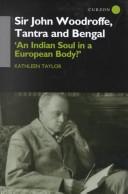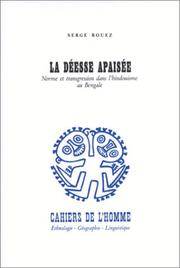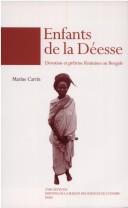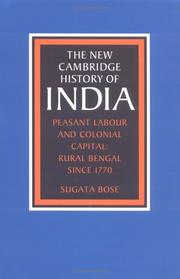| Listing 1 - 10 of 27 | << page >> |
Sort by
|
Book
Year: 1674 Publisher: London printed : [s.n.],
Abstract | Keywords | Export | Availability | Bookmark
 Loading...
Loading...Choose an application
- Reference Manager
- EndNote
- RefWorks (Direct export to RefWorks)
eebo-0018
Baptists --- Infant baptism. --- Fort, William. --- Stillingfleet, Edward,
Book
ISBN: 1476629560 Year: 2017 Publisher: Jefferson, North Carolina : McFarland & Company, Inc., Publishers,
Abstract | Keywords | Export | Availability | Bookmark
 Loading...
Loading...Choose an application
- Reference Manager
- EndNote
- RefWorks (Direct export to RefWorks)
"This book reexamines the traumatic events at both forts. The Fort William Henry Massacre was condemned by both British and French as barbaric. Yet these European powers proved capable of similar crimes. The Fort Phil Kearny defeat, traditionally attributed to Captain William Fetterman's having disobeyed orders, has been scrutinized in recent years"--
Fort William Henry (N.Y.) --- New York (State) --- United States --- Capture, 1757. --- History --- Campaigns.

ISBN: 128371129X 0203037189 1136120904 9781136120909 9780203037188 070071345X 9780700713455 9781136120985 113612098X 9781136121067 1136121064 9780415749367 0415749360 Year: 2001 Publisher: Richmond Curzon
Abstract | Keywords | Export | Availability | Bookmark
 Loading...
Loading...Choose an application
- Reference Manager
- EndNote
- RefWorks (Direct export to RefWorks)
Working with Bengali mentors, especially his close friend A. B. Ghose, Sir John Woodroffe became the pseudonymous orientalist Arthur Avalon, famous for his tantric studies at the beginning of the twentieth century. Best known for The Serpent Power, the book which introduced 'Kundalini Yoga' to the western world, Avalon turned the image of Tantra around, from that of a despised magical and orgiastic cult into a refined philosophy which greatly enhanced the prestige of Hindu thought to later generations of westerners.This biographical study is in two parts. The first focuses on
Indologists --- Indian studies specialists --- Asianists --- Tamilologists --- Woodroffe, John George, --- Avalon, Arthur, --- Bengal (India) --- Bengal --- Fort William (India) --- Presidency of Fort William (India) --- Bengale (India) --- Baṅgāla (India) --- Eastern Bengal and Assam (India) --- West Bengal (India) --- East Bengal (Pakistan)

ISBN: 2713209919 9782713209918 Year: 1992 Publisher: Paris Ecole des hautes études en sciences sociales
Abstract | Keywords | Export | Availability | Bookmark
 Loading...
Loading...Choose an application
- Reference Manager
- EndNote
- RefWorks (Direct export to RefWorks)
Hinduism --- Religions --- Brahmanism --- Bengal (India) --- Bengal --- Fort William (India) --- Presidency of Fort William (India) --- Bengale (India) --- Baṅgāla (India) --- Eastern Bengal and Assam (India) --- West Bengal (India) --- East Bengal (Pakistan) --- Religious life and customs.
Book
ISBN: 8175968281 8175963247 Year: 2006 Publisher: New Delhi : Foundation Books,
Abstract | Keywords | Export | Availability | Bookmark
 Loading...
Loading...Choose an application
- Reference Manager
- EndNote
- RefWorks (Direct export to RefWorks)
This book attempts to understand the commercial and social history of erstwhile Bengal in terms of its links with it neighbouring countries in the northern region of the Bay of Bengal. It touches upon the key issues in both maritime and territorial history such as the early medieval trade revolution and its impact on the borders of Bengal.The discussion focusses on Southeast Bengal - the most economically developed area of Bengal in terms of transport networks, agriculture, artisan products and trade. Most of this area underwent two major transformations in the twentieth century: once as a result of the formation of East Pakistan in 1947 and a second time after the formation of Bangladesh in 1971. The volume concludes with certain major issues of concern between India and Bangladesh at the turn of the twenty-first century.
Merchants --- Commerce --- Business & Economics --- Local Commerce --- Businesspeople --- History --- Bengal (India) --- Bengal --- Fort William (India) --- Presidency of Fort William (India) --- Bengale (India) --- Baṅgāla (India) --- Eastern Bengal and Assam (India) --- West Bengal (India) --- East Bengal (Pakistan)
Book
ISBN: 1139507346 1108056040 Year: 1819 Publisher: Place of publication not identified : Cambridge : publisher not identified, Cambridge University Press
Abstract | Keywords | Export | Availability | Bookmark
 Loading...
Loading...Choose an application
- Reference Manager
- EndNote
- RefWorks (Direct export to RefWorks)
Fort William College was an academy established in Calcutta in 1800 by the British colonial administrator Richard Wellesley (1760-1842). Its purpose was to train British officials in numerous oriental languages, which resulted in the publication of several pioneering reference works and thousands of translated texts. First published in 1819, this book was compiled by Thomas Roebuck (1781-1819), assistant secretary to the college's council, as a tribute to Lord Wellesley's work. It contains records of all the memorable events that had taken place at the college since its establishment; Roebuck believed this would help new students in learning the principles on which the college was founded, and how former students had benefited accordingly. Drawing on official documents and containing writings by Wellesley himself, the work offers historians and linguists a valuable insight into a highly influential institution in British India.
Book
ISBN: 1283135981 9786613135988 0231520220 0231149042 Year: 2010 Publisher: New York : Columbia University Press,
Abstract | Keywords | Export | Availability | Bookmark
 Loading...
Loading...Choose an application
- Reference Manager
- EndNote
- RefWorks (Direct export to RefWorks)
A terrifying sound disturbs the peace of Hansuli Turn, a forest village in Bengal, and the community splits as to its meaning. Does it herald the apocalyptic departure of the gods or is there a more rational explanation? The Kahars, inhabitants of Hansuli Turn, belong to an untouchable "criminal tribe" soon to be epically transformed by the effects of World War II and India's independence movement. Their headman, Bonwari, upholds the ethics of an older time, but his fragile philosophy proves no match for the overpowering machines of war. As Bonwari and the village elders come to believe the gods have abandoned them, younger villagers led by the rebel Karali look for other meanings and a different way of life.As the two factions fight, codes of authority, religion, sex, and society begin to break down, and amid deadly conflict and natural disaster, Karali seizes his chance to change his people's future. Sympathetic to the desires of both older and younger generations, Tarashankar Bandyopadhyay depicts a difficult transition in which a marginal caste fragments and mutates under the pressure of local and global forces. The novel's handling of the language of this rural society sets it apart from other works of its time, while the village's struggles anticipate the dilemmas of rural development, ecological and economic exploitation, and dalit militancy that would occupy the center of India's post-Independence politics.Negotiating the colonial depredations of the 1939-45 war and the oppressions of an agrarian caste system, the Kahars both fear and desire the consequences of a revolutionized society and the loss of their culture within it. Lyrically rendered by one of India's great novelists, this story of one people's plight dramatizes the anxieties of a nation and the resistance of some to further marginalization.
Bengali fiction. --- Bengali literature --- Bengal (India) --- Rural conditions. --- Bengal --- Fort William (India) --- Presidency of Fort William (India) --- Bengale (India) --- Baṅgāla (India) --- Eastern Bengal and Assam (India) --- West Bengal (India) --- East Bengal (Pakistan) --- Tribes --- Villages --- Hamlets (Villages) --- Village government --- Cities and towns --- Tribes and tribal system --- Families --- Clans --- Rural conditions
Book
ISBN: 1009339842 1009383930 1009339826 Year: 2023 Publisher: Cambridge : Cambridge University Press,
Abstract | Keywords | Export | Availability | Bookmark
 Loading...
Loading...Choose an application
- Reference Manager
- EndNote
- RefWorks (Direct export to RefWorks)
The book examines the works of Akshay Kumar Dutta (1820-1886), who can be seen as ideologically inhabiting the cusp between religion and rationalism - the two most crucial avenues of debate and discussion in the public sphere in nineteenth-century Bengal. While nineteenth-century Bengal has been an important discourse within South Asian history, major figures of reform such as Rammohun Roy, Debendranath Tagore, Iswarchandra Vidyasagar, or Keshub Chunder Sen have generally been the focus. The book attempts to rescue Dutta from the clutches of academic amnesia, and to locate him as one of the foundational figures of intellectual refashioning among the common albeit educated public in nineteenth-century Bengal.
Datta, Akshaẏakumāra, --- Criticism and interpretation. --- Bengal (India) --- Intellectual life --- Akshaẏakumāra Datta, --- Dutta, Akshaykumar, --- Akshaykumar Dutta, --- Bengal --- Fort William (India) --- Presidency of Fort William (India) --- Bengale (India) --- Baṅgāla (India) --- Eastern Bengal and Assam (India) --- West Bengal (India) --- East Bengal (Pakistan) --- Bengali literature --- History and criticism. --- Datta, Akshay?akuma¯ra,

ISBN: 2271053838 2735107396 2271078571 9782271053831 Year: 1997 Volume: *2 Publisher: Paris : Maison des sciences de l'Homme, C.N.R.S.-Editions (Centre National de la Recherche Scientifique),
Abstract | Keywords | Export | Availability | Bookmark
 Loading...
Loading...Choose an application
- Reference Manager
- EndNote
- RefWorks (Direct export to RefWorks)
Dans une enquête anthropologique qui étudie les interactions entre croyances collectives et expériences individuelles et développe une approche cognitive des faits de croyance, Marine Canin montre combien il importe pour l’éthnologie religieuse du monde indien de prendre en compte les stratégies individuelles. Partant d'histoires de vie de femmes dont elle a partagé l'existence au Bengale, l'auteur montre comment l'infortune qui frappe la personne est réinterprétée en termes de causalité religieuse dans des formes de culte non institutionnalisés. La plupart de ces femmes ont en effet vécu des expériences traumatisantes et ont été amenées à la dévotion à la suite d'un rejet, voire d'une exclusion ou d'une mort sociale. Personnage principal du livre, Parvati, par exemple, fonde un sanctuaire thérapeutique dédie à Shiva et à Kali, à la suite d'un mariage en dehors du groupe santal auquel elle appartenait à l' origine. On assiste alors à l'émergence d'un type nouveau de prêtrise féminine où l'expression de la dévotion voisine avec des formes populaires d' exorcisme . Tiraillées entre les divinités du monde tribal et les dieux hindous, ces personnes cherchent plus ou moins consciemment à revendiquer une identité sur le mode religieux, en manipulant des concepts liés au rituel pour les resituer dans leurs situations individuelles. Dès lors, certains symboles corporels exprimant l'ambivalence sexuelle permettent aux dévots des deux sexes de trouver de nouvelles formes d'éfficacité thérapeutique : c'est le cas des ojha, prêtres tribaux santal qui se féminisent pour assurer les cultes dont ils ont la charge et des prêtresses qui, inversement, adoptent des caractères masculins pour officier dans les sanctuaires. Au Bengale, dans un contexte où les différences entre tribus et castes tendent a s'estomper, la notion d'acculturation des Santal au monde hindou apparaît donc centrale dans un milieu fortement imprégné des cultes tantriques.
Women priests --- Priests, Hindu --- Hindu women --- Religious life. --- Bengal (India) --- Religion. --- Religion --- Philosophy & Religion --- Hinduism --- Santals (South Asian people) --- Women [Bengali ] --- Religious life --- Bengal --- Fort William (India) --- Presidency of Fort William (India) --- Bengale (India) --- Baṅgāla (India) --- Eastern Bengal and Assam (India) --- West Bengal (India) --- East Bengal (Pakistan) --- Women priests - India - Bengal. --- Priests, Hindu - India - Bengal. --- Hindu women - Religious life. --- Bengal (India) - Religion. --- prêtrise féminine --- croyance --- prêtre-devin --- caste --- dévotion (anthropologie)

ISBN: 0521266947 Year: 1993 Volume: 2 Publisher: Cambridge Cambridge University press
Abstract | Keywords | Export | Availability | Bookmark
 Loading...
Loading...Choose an application
- Reference Manager
- EndNote
- RefWorks (Direct export to RefWorks)
Industries --- Peasants --- Industrie --- Paysannerie --- History --- Histoire --- Bengal (India) --- Bengale (Inde) --- Colonization --- Rural conditions --- Colonisation --- Conditions rurales --- -Peasantry --- Agricultural laborers --- Rural population --- Marks (Medieval land tenure) --- Villeinage --- Industrial production --- Industry --- Economics --- -Bengal (India) --- -Colonization --- -History --- History. --- Peasantry --- Bengal --- Fort William (India) --- Presidency of Fort William (India) --- Bengale (India) --- Baṅgāla (India) --- Eastern Bengal and Assam (India) --- West Bengal (India) --- East Bengal (Pakistan) --- Rural conditions. --- Industries, Primitive
| Listing 1 - 10 of 27 | << page >> |
Sort by
|

 Search
Search Feedback
Feedback About UniCat
About UniCat  Help
Help News
News